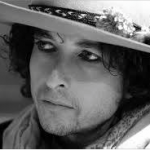This is another longish blog that focuses on issues of identity as Dr. Wayne Andersen and I work on our new book Identity. Yes, a little long, but worth the read. Enjoy…
 How do you define yourself? There are many types of answers from the toothpaste you use to the car you drive to where you live to how much money you make to how well your kids did in school to your politics to your religion to your profession, and on and on it goes.
How do you define yourself? There are many types of answers from the toothpaste you use to the car you drive to where you live to how much money you make to how well your kids did in school to your politics to your religion to your profession, and on and on it goes.
At a dinner party, two of the guests were economists. One of them began to make the assertion that the worth of a person was directly tied to how much money he or she had made. As it so happened, the other economist was an academic who did not make a lot of money himself. In exploring the first economist’s idea, he became more and more entrenched in his belief that worth of a human being was directly connected to earning power, inadvertently insulting his colleague. His position was, to say the least, extreme. But often the extreme viewpoint makes it is easier to see a concept for what it is.
When the concept is expressed with more subtly and nuance, it can be harder to observe. Yet the basic thought is still the same. Too many people, worldly success is the standard by which others, and even themselves, are to be measured. There is a name for showing off all of your expensive toys to the world: conspicuous consumption. This is a theory that was developed by economist Thorstein Veblen. His idea was that much spending by the affluent is motivated primarily to display wealth and status to others rather than from enjoyment of the goods or services themselves.
“Who are you?” some say, is the most important question you can ever ask yourself. Why is it important at all? The question is truly unanswerable. But, but if you have to answer it, ask, “Who wants to know?”
Let’s use a little logic for a moment. We cannot BE what we possess. If you HAVE something, you can’t BE the thing you HAVE. Who is the YOU that has it? Therefore, anything you HAVE can’t be you. So you can’t be your car, your good looks, your mind, your spirit, your soul, your membership in a political party, your citizenship of a country, your creed, beliefs, religion, possessions, accomplishments, failures and successes, or your bank account.
Think of the ways you may have defined yourself in the past. Was it your accomplishment, failures, education, groups you belong to, ideas you held, your politics, sex appeal, intelligence, moral code, spiritual precepts, or other such things? It is easy to fall into the trap of thinking what you have or fail to have somehow defines you.
We often identify people with their professions. A doctor has achieved certain medical knowledge and skill that can be used professionally. A pilot has another set of skills and knowledge that can be used in the field of aviation. A musician has yet another set of skills and knowledge, as does a taxi driver, deep-sea diver, computer repairperson, etc.
These types of definitions are based on facts. There is an objective reality to each of them. However, they are not able to define the essence of a person, only his or her abilities, knowledge, talents, skills, and professional qualifications. Some professions demand certain levels of aptitudes, innate natural abilities, or the capacity to learn. And we may have high regard for what it takes to reach the distinguished levels of achievement to qualify for those professions. But these professions fail to answer the question, “Who are you?” You cannot be what you possess. You are not your accomplishments or skills anymore than you can be your car.
It is easier to say what you are not than to say who you are. Yet, the world is filled with answers that commonly follow a worldview. From a spiritual point of view we could say that you are spirit that has entered into matter. Or you are love. Or you are a sinner that needs to be saved.
From a psychological point of view, you are your pathology, your hang-ups, your problems, your repressed areas of consciousness, your past traumas, your gestalt.
From a communist point of view, you are the proletariat (workers), or a capitalist (those who exploit the proletariat), or the bourgeois (tools of the capitalists.) According to Karl Marx, these roles lead to a class struggle. Communism, as most isms, tries to appeal to identity. Those who are adherents, the good guys, and those who do not follow the party line, the bad guys.
From an Eastern philosophical viewpoint, you are your higher-self obstructed by your illusions and karma. And, the ideal is, that once you reach Enlightenment, you will finally know yourself in the ultimate sense, something that is seen to be impossible until then.
You may have various deeply held beliefs, but you cannot be your beliefs anymore than you can be your kitchen stove because, as we said, you cannot be that which you possess.
Which leads us to a very useful insight: anyway you try to define yourself is futile and misleading.
You do not have the ability to say what you are. Nor does anyone else. There is no right answer to this question because there is no accurate answer to this question.
Yet, people love to define themselves. It gives them a feeling of place, of belonging, of knowing where they stand in relationship to others. I’m a Aries with Gemini rising, I’m a obsessive/compulsive, I’m a type B personality, I’m a vegetarian.
On the one hand, functional definitions such as pilot and doctor are useful. But, these definitions are not able to penetrate the deeper essence of who we are. They simply tell us what we do.
Some people claim that we are the sum total of all we have experienced, learned, thought, done, and known. Yet, you are the very same person before you had all of these experiences and develop skills or had the accumulated learning. If you are working toward building a new career, it is you, before entering into the career, still you, while you are learning what you need, and finally, you, even when you become a veteran in your profession.
We can say things about ourselves. These things do not tell us who we are. We can say what we like and don’t like. We can say what we fear and what we love. We can know our values and aspirations. We can know our good and bad habits. We can care about the people we love. We can hold religions and spiritual beliefs. We can know our history. We can know many things about ourselves, but we are not the things we know.
In fact, it is good to know things about yourself, your values and aspirations, your patterns, your likes and dislikes, all valuable information in your life-building process. But, don’t confuse this useful knowledge with the more profound question of who you are.
Here is the lesson in a nutshell: Give up the question of who you are. Free yourself from such existential mysteries. We don’t and can’t know. Don’t be fooled by others proposing answers to you. They may be sincere but they won’t be very helpful, given no one has the answer. These fallacious answers might make you feel a sense of peace for a moment. But, like all nice sounding untruths, their comfort will run out pretty fast.
YOU DON’T KNOW WHO YOU ARE AND THAT DOES NOT MATTER IN THE LEAST.









